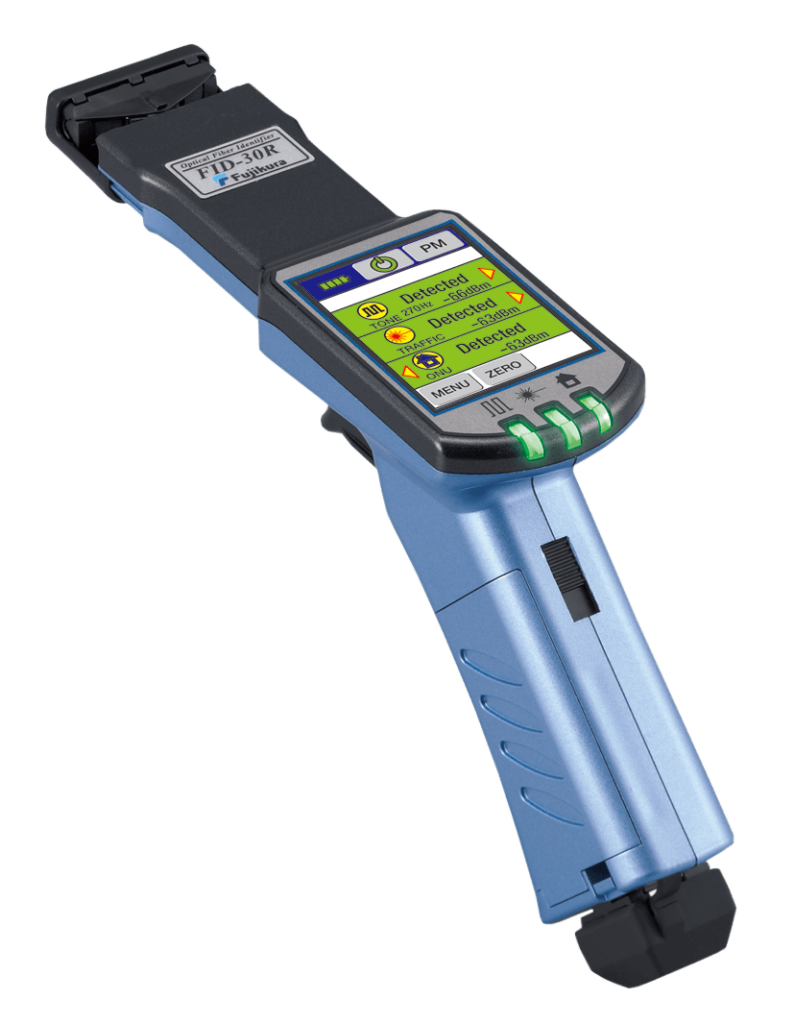Optimize Your Fiber Optic Performance: Understanding Optical Fiber Diameter Analyser Technology
The performance of fibre optic systems is critically influenced by the accuracy of their diameter, a factor typically overlooked in the search of optimum signal stability. Recognizing the innovation behind optical fibre diameter analysers exposes the elaborate balance in between measurement precision and production quality. These tools not just enhance conformity with market standards but likewise give real-time insights that can preemptively resolve prospective concerns. Nevertheless, the implications of their usage prolong beyond plain dimension; they can essentially change the landscape of fiber optic efficiency. What elements should one think about to harness their full capacity?
Value of Optical Fiber Diameter
The size of optical fiber plays a vital duty in determining the performance and efficiency of communication systems. On the other hand, smaller sized diameters tend to sustain less modes, which can boost signal quality and lower crosstalk.

In addition, recognizing the diameter's ramifications can cause set you back financial savings by minimizing the requirement for signal amplification and repeaters in substantial networks (optical fibre diameter analyser). In verdict, the significance of optical fibre size can not be overstated, as it straight impacts the overall efficiency and reliability of modern-day interaction systems
How Size Impacts Signal Quality
Signal high quality in optical fibre systems pivots considerably on the size of the fibre. A smaller size can lead to greater attenuation prices, resulting in signal loss as light journeys via the fiber.
Conversely, bigger diameters normally permit enhanced light capture and decreased modal diffusion, enhancing signal clarity. In multimode fibres, a larger core diameter can sustain numerous light modes, however it may likewise present intermodal diffusion, which can break down signal quality. Consequently, selecting the ideal fibre diameter is critical for achieving the wanted performance in certain applications.
Additionally, the interaction in between the fiber diameter and the wavelength of the light used plays a critical duty in figuring out the effective transmission distance and general signal integrity. As such, recognizing exactly how fibre size influences signal quality is crucial for network designers and engineers making every effort to enhance optical fiber systems for dependable, high-speed information transmission.
Overview of Diameter Analyser Modern Technology
In numerous optical fiber production processes, exact measurement of fibre size is essential for making sure regular efficiency and quality (optical fibre diameter analyser). Diameter analysers are innovative instruments developed to analyze the physical dimensions of optical fibers with high accuracy. They utilize sophisticated optical and laser innovations to gauge the diameter, ovality, and concentricity of the fibre, therefore supplying crucial information for quality control
These analysers can run in-line throughout the production procedure great post to read or as part of off-line screening procedures. In-line systems make it possible for real-time surveillance, enabling makers to change parameters instantly, thereby keeping ideal production conditions. Off-line analysers, on the various other hand, supply thorough assessments of sets, making sure that any kind of inconsistencies from defined resistances are determined and addressed.
Diameter analysers considerably add to the decrease of flaws in optical fibres, enhancing overall product integrity. By continually gauging vital specifications, these technologies facilitate compliance with industry standards and specs. As the demand for high-performance optical fibers remains to rise, the duty of size analysers ends up being progressively important in attaining the wanted quality and performance standards in fiber optic systems.
Secret Features of Fibre Diameter Analysers
Although numerous designs of fibre size analysers exist, they frequently share several key functions that improve their performance and reliability. Among the most substantial functions is high-resolution dimension abilities, which ensure exact diameter readings, vital for preserving quality control in fibre production. Additionally, several analysers include sophisticated optical sensors created to spot minute variations in fibre size, therefore providing very useful data for procedure optimization.
One more important attribute is real-time surveillance, permitting drivers to obtain immediate comments on fibre size throughout the production process (optical fibre diameter analyser). This capacity promotes fast modifications and minimizes the possibility of problems. Numerous analysers additionally come furnished with user-friendly user interfaces, allowing operators to easily navigate with setups and data results
Moreover, robust data storage space and analysis capabilities are go now essential for tracking historical efficiency fads and ensuring conformity with industry criteria. Some designs even provide connection options for assimilation into existing production control systems, enhancing general functional effectiveness. Compact and portable designs permit for adaptable release within production settings, guaranteeing that top quality assurance procedures are seamless and effective. These functions collectively add to the effectiveness of fibre size analysers in enhancing fibre optic efficiency.
Ideal Practices for Fiber Optimization

First, routine calibration of optical fibre size analysers is crucial. This makes sure exact measurements and decreases prospective disparities that might affect performance. Next off, keeping a tidy workplace is essential; dust and impurities can cause indicate destruction.
Furthermore, it is vital to choose fibers that meet specific application requirements. This includes evaluating aspects such as attenuation, data transfer, and ecological conditions. Correct installation techniques must also be followed, including preventing sharp bends and too much stress, which can compromise fibre honesty.
Furthermore, utilizing advanced monitoring systems can facilitate real-time performance analyses, enabling prompt recognition of problems. Regular testing and upkeep need to be conducted to make sure that fibers stay within optimal functional criteria.
Last but not least, training workers on the most recent fibre optimization modern technologies and methodologies will enhance their capability to carry out reliable strategies. By following these best methods, organizations can substantially boost the efficiency and life-span of their optical fiber systems, ensuring efficient communication and data transfer.
Conclusion
To conclude, the integration of optical fibre diameter analyser technology is essential for making the most of fibre optic performance. By guaranteeing exact dimensions of fibre dimensions, these analysers considerably enhance signal quality and reduce losses throughout information transmission. Regular calibration and maintenance of the analysers are crucial to maintain ideal performance and compliance with industry standards. Inevitably, the application of this innovation facilitates improved data transmission prices and reinforces signal integrity, adding to the overall efficiency of fiber optic systems.
Signal quality in optical fiber systems pivots substantially on the diameter of the fiber.In numerous optical fibre production processes, precise measurement of fibre size is vital for ensuring regular performance and top quality. As the demand for high-performance optical fibers proceeds to increase, the function of size analysers ends up being increasingly essential in accomplishing the wanted quality and performance requirements in fibre optic systems.
These attributes collectively add to the efficacy of fiber size analysers in enhancing fiber optic performance.
In verdict, the integration of optical fibre size analyser technology is vital for making site web the most of fiber optic efficiency.
Comments on “Top-Rated Optical Fibre Diameter Analyser for Mass Production”